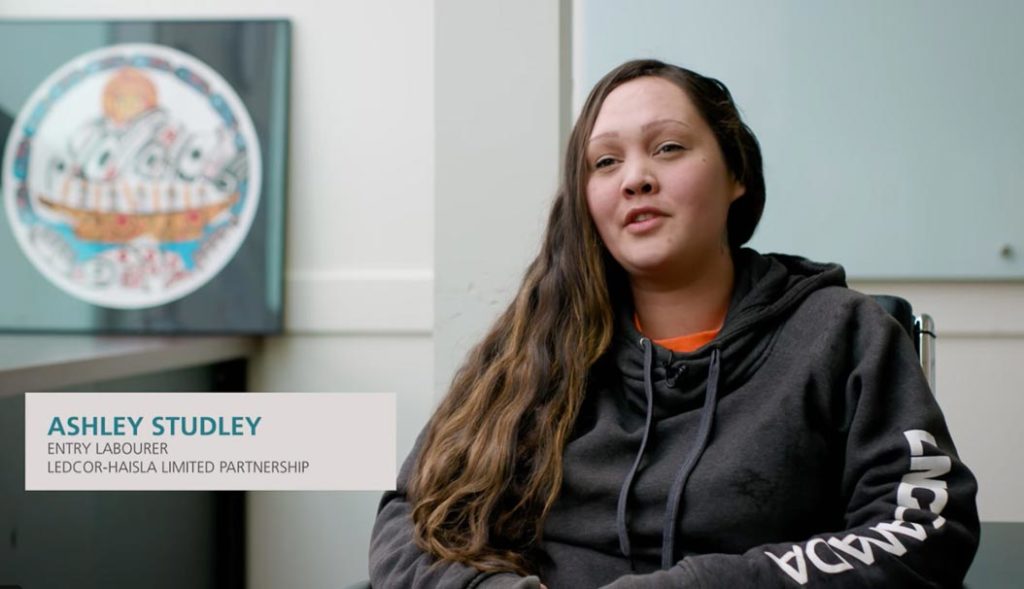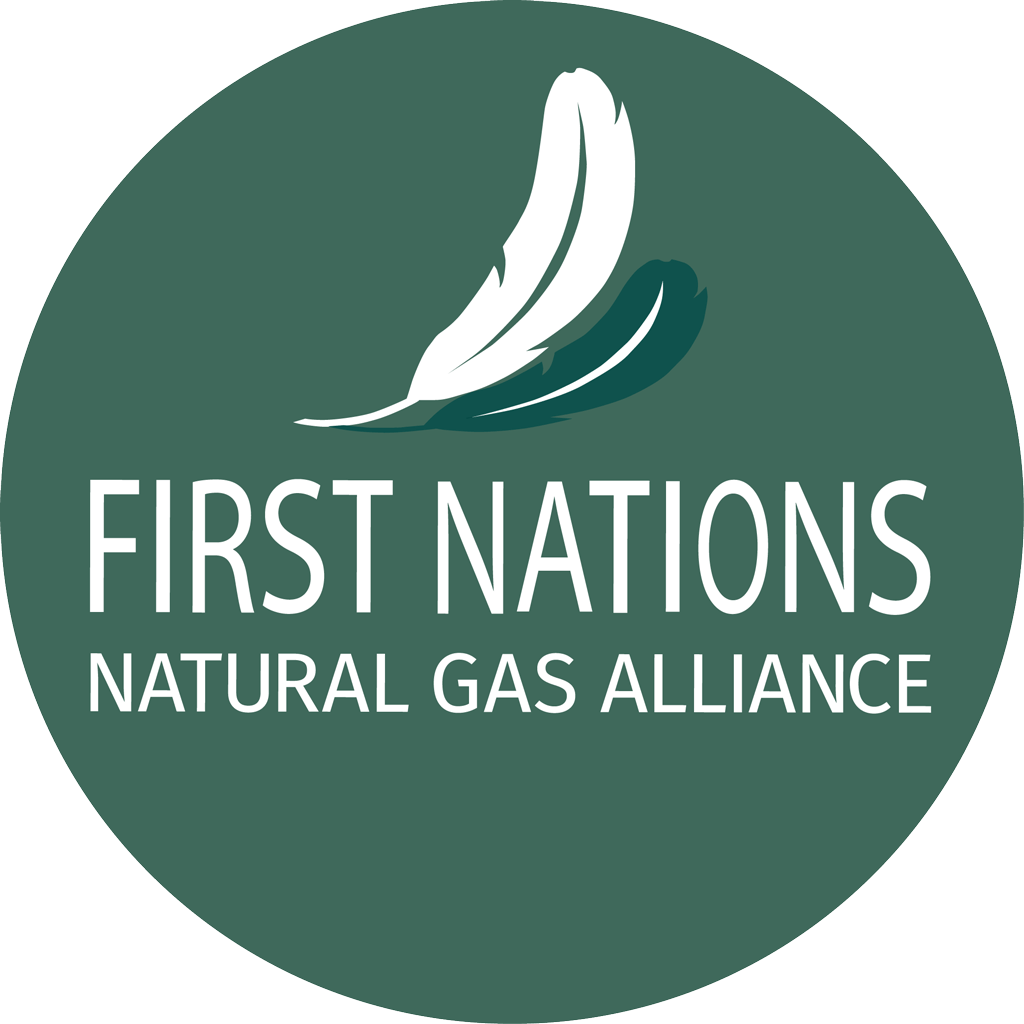
The coronavirus pandemic has thrown more than a few crimps into work and hiring along the Coastal GasLink pipeline route, and at the LNG Canada site at Kitimat.
But CGL expects soon to have some 3,000 people on the job — and employment is still the Number One benefit that the Haisla Nation has received from the LNG projects.
“The biggest thing is jobs,” says Crystal Smith, elected chief councillor of the Haisla Nation in BC.
“The most challenging aspect of this whole thing, currently, is COVID. LNG Canada and Coastal GasLink had to scale back tremendously, just doing the bare essentials, meeting the requirements of permit applications, keeping the project moving, but at a snail’s pace.
“While they’re moving back, and putting more manpower to the project, there are still restrictions that are impacting our people. . . . They’re working for two weeks, but then they’re off for two weeks, whereas before they’d been working six days on and one day off.
“So some of our people are definitely feeling the impacts of that. That’s not to say that they’re not thankful and grateful that they still have a job. And I think, for the most part, anybody that wants to work, that is willing and wanting to move home, the opportunities are still there. It just might take a little bit longer until we all get out of this.”
Now Smith is actively pursuing developers for employment and contracting opportunities, “not only employment, but also what they’re doing for training for long-term careers.”
In 2018, Chief Crystal invited environmentalist critics of LNG development to visit those First Nations that support LNG.
“The Haisla . . . are satisfied that LNG Canada has designed its project to address our concerns, and in the process, will operate with the lowest GHG emissions of any large-scale LNG project in the world today.
“We see significant employment for our members, access to educational opportunities, and a way forward for a truly independent nation. What we need is well-paying jobs and economic development opportunities, so we can dramatically reduce unemployment.
“LNG development has offered that path for the Haisla Nation.”
Three years later, she now notes the economic benefits of LNG development extend well beyond employment, enabling the Haisla to launch and maintain a variety of thriving education and social programs:
“We do definitely have quite a few programs in education. I actually just finished a program that was developed through the University of Northern BC, that’s centred completely around our culture and our language.
“There were 26 participants from the nation that went through the course (Haisla Language/ Xa’islak’ala Level 1), that was offered to them.
“One participant gave me a little bit of her history. She’s Haisla, but she’s never been home. We’re offering the course to people on the other side of the country.
“It’s so emotional to be able to participate and see the passion of our membership that want to save our language, and then reconnect. . . . It’s bringing together people who may not have spoken in years. You’re redeveloping friendships and connections within the community.”
Another example: a graduate certificate in economic development, through Royal Roads University on Vancouver Island.
“I wanted to make mention of it because one of our desires is that we as a nation share with our neighbouring nations, and for this specific program we have reached out to other nations . . . and offered at least two seats to each of those nations, so that they have membership that can participate with ours in it.”
All in all, says Smith, so many Haisla members are accessing education programs that the education budget has gone into the red.
“While some other leaders would sort of cringe at the thought of going into a deficit for program funds, I view that as a positive. I am so thrilled with our people and realizing the opportunities seen and opportunities they’re going after. Good for them.
“It’s great to see that they’re not only going after employment opportunities but they also have their sights set on long-term goals and objectives, and careers.”
Health services is another area that has benefitted from LNG-related income:
“We are opening our brand-new health centre facility here in our community. . . . We heavily contributed our own-source revenue funds, a little over $2 million, to ensure that the facility meets the needs of our people. We’re expanding our mental health services dramatically, so it’s having a huge impact everywhere.”
The Haisla Nation is also seeking to do more for members who don’t live on the Kitamaat reserve .
“For example, here on reserve, we’ve allocated funding for Haisla elders’ home renovations for some years. Now we have had requests from elders off-reserve, homeowners in the municipality of Kitimat, and I’m happy to say that we’re offering it now to off-reserve elders within Kitimat.”
Chief Crystal turns to LNG-employment benefits again:
“There are so many shining stars that I see. One is a young single mum, and I have mentioned her and have gotten her permission. Her name is Ashley Studley. She participated in a program with Ledcor and did a video.
“Being a single mum, Ashley didn’t have too many support systems around her. Now she’s got all these health benefits and she’s able to support her daughter.
“Ledcor hired Amanda Ross as their liaison worker, a go-between, between the company, and our membership. And she got Ashley to participate in one of Ledcor’s job-readiness programs. Ashley was the only female and it’s almost a year later and she’s still on-site and she’s still working hard.
“Seeing her posts go from ‘I cannot feed or clothe my daughter’ to ‘I can’t get enough sleep because I have to get up at five o’clock in the morning’ is inspiring.
“I messaged her and told her ‘You are one of my biggest inspirations.’ I told her: ‘You’re my reason to wake up. You are part of my reason, and part of my huge passion, to do what I’m doing.’ I love telling her story.”
LNG development has been “tremendously positive” for the Haisla people, says Smith.
Now the nation is working towards its own LNG project: Cedar LNG, a floating LNG plant on Kitimat Arm, Douglas Channel. It would get its natural gas from the Coastal GasLink pipeline, which is being built to feed the LNG Canada plant that is under construction at Kitimat.
“The project is a key element of the Haisla Nation economic and social development strategy and will further advance reconciliation by allowing Haisla Nation to — for the first time ever — directly own and participate in a major industrial development in its territory.”
